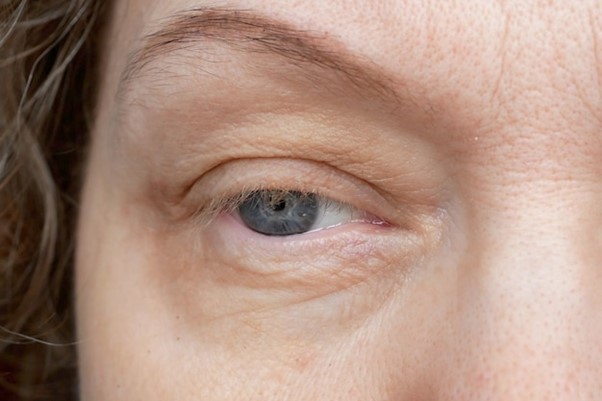What is Ptosis?
The term ptosis might sound a bit clinical, so it’s often called droopy eyelid. The official term is blepharoptosis—a fancy word derived from Greek, with “blepharo” relating to the eyelid and “ptosis” indicating a fall.
Essentially, it describes a situation where the upper eyelid droops over the eye more than it should.
This drooping can sometimes obstruct vision, making everyday tasks a bit of a challenge.
A droopy eyelid is more than a cosmetic issue; it can hinder your sight when the eyelid blocks your view.
Some might find this impacts their self-esteem due to the change in appearance.
Recognizing the Symptoms of Ptosis
So, what are the telltale signs of ptosis? Well, the most obvious one is when the upper eyelid sags noticeably. Beyond the appearance, it can cause real issues with vision.
Here’s what else to watch for:
- Visible Changes: A sagging eyelid is the main sign, but it can also lead to cosmetic concerns.
- Vision Impact: The droop might partially cover the pupil, causing troubles with seeing clearly.
- Associated Issues: Ptosis symptoms can include dry eye or more severe exposure keratopathy, which is damage due to the eye being exposed too long.
Spotting these symptoms can pave the way for early discussions with a health professional.
Exploring the Types of Ptosis
Ptosis is not a one-size-fits-all condition. It has flavors, known as congenital and acquired forms, that affect individuals differently.
Congenital Ptosis: Understanding Its Implications
When ptosis is present at birth, it’s termed congenital. This form is often due to muscle irregularities that babies are born with. Such cases can affect how children develop vision over time. Catching this early is vital since ptosis causes in children can lead to further complications if not addressed promptly.
Due to the impact on vision during formative years, early intervention is key. Proper treatments can help mitigate longer-term issues that affect eye development.
An Insight into Acquired Ptosis
The other forms of ptosis develop later in life and are referred to as acquired. Unlike congenital, acquired ptosis causes include:
- Aging: The body’s natural wear and tear can affect muscles in the eyelids.
- Trauma: Accidents can damage the eyelid muscles.
- Health Issues: Conditions like Horner syndrome or myasthenia gravis can lead to ptosis.
Knowing the root cause helps doctors devise effective treatment plans.
Diagnosis and Evaluation: How Health Professionals Identify Ptosis
Identifying ptosis involves a detailed eye exam, focusing on more than just a droopy lid. Health professionals start by checking overall eye health and visual acuity.
Common evaluation techniques include:
- Hering Test: Used to evaluate how both eyes work together.
- Fatigue Test: Helps in determining if the drooping is due to muscle weakness.
These tests may sound intricate, but they play a crucial role in diagnosing ptosis. Once a firm diagnosis is made, professionals can craft a treatment plan tailored to the patient’s specific needs.
Treatment Options for Ptosis: Surgical and Non-Surgical
When it comes to dealing with ptosis, there are both non-surgical and surgical routes available:
- Non-Surgical Options: These are typically suited for mild cases where lifestyle changes could help, such as using special props or eyeglasses.
- Surgical Treatments: More pronounced cases might require procedures like levator advancement, where eyelid muscles are tightened, or conjunctival resection to adjust the eyelid’s position.
Choosing the right ptosis treatment is significant. It hinges on individual needs, severity of symptoms, and personal preference.
Preparation for Surgery and Post-Operative Care
Surgery preparation is crucial. It involves steps like undergoing necessary tests and consultations to gear up for the procedure.
After surgery, certain care steps must be followed:
- Essentials: Keeping the area cool with ice compresses helps reduce swelling.
- Follow-Ups: Adhering to follow-up schedules ensures proper healing.
These post-operative routines ensure the best chances for recovery and satisfaction.
Conclusion and Call to Action
In wrapping up, we’ve traversed the world of ptosis—understanding what it is, what it looks like, and how it’s treated. From spotting ptosis symptoms early to exploring viable ptosis treatment options, you’re now better equipped to take informed steps.
For anyone experiencing ptosis challenges, seeking professional guidance is crucial.
Mina Hospital offers personalized care with experienced professionals.
If you’ve noticed concerning symptoms or just want to learn more, reach out to Mina Hospital today.
Their team is ready to assist in finding the best path forward for you. Your journey to a clearer vision and renewed confidence could start today!


